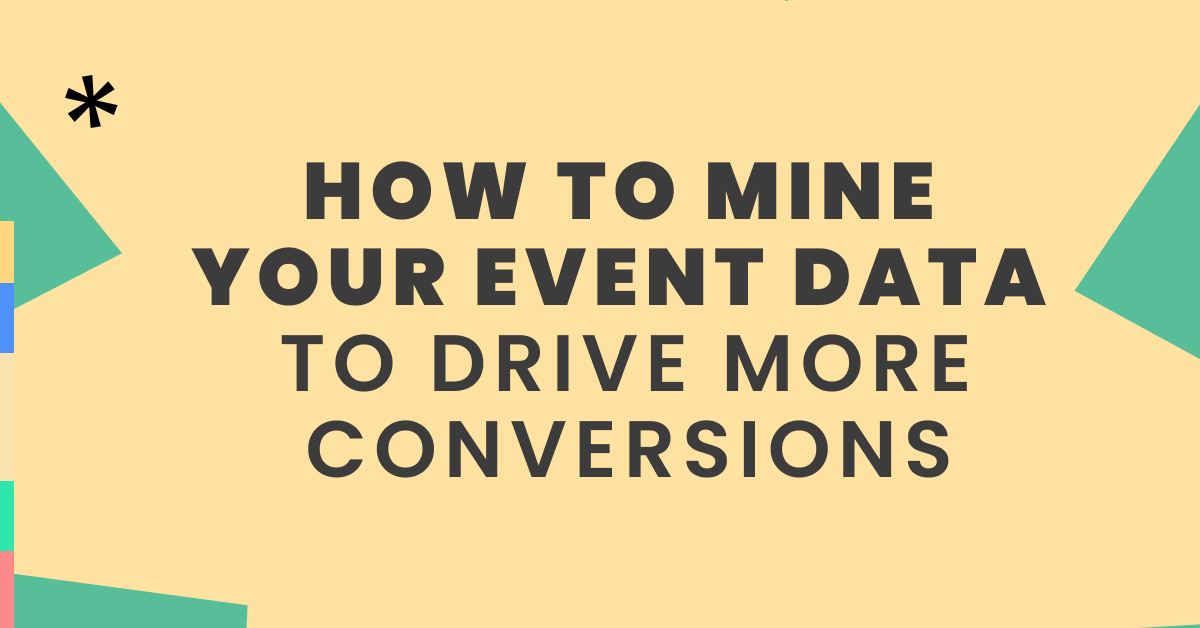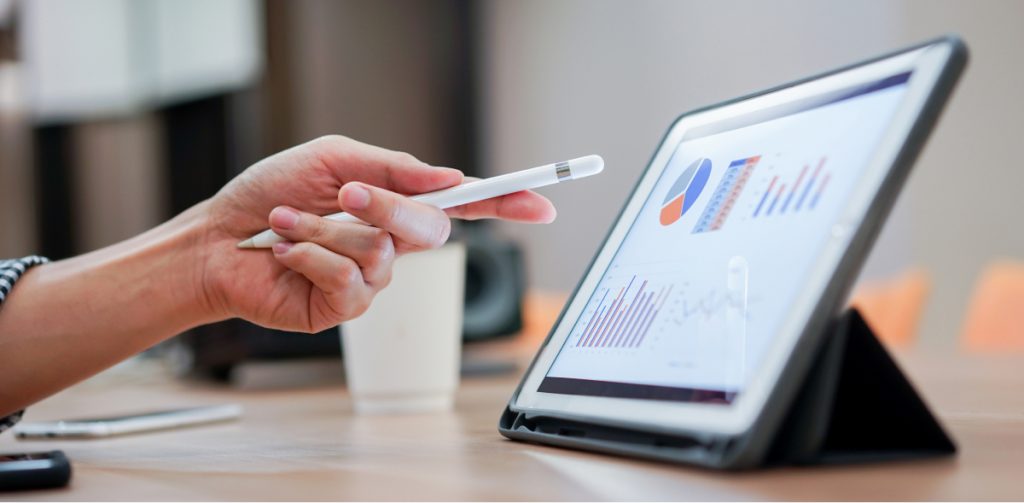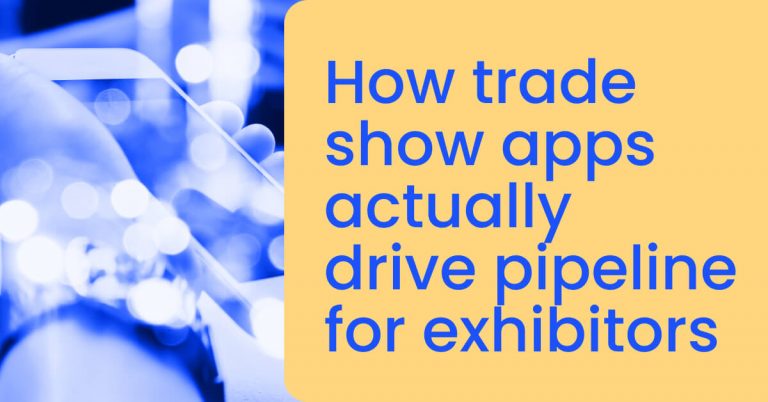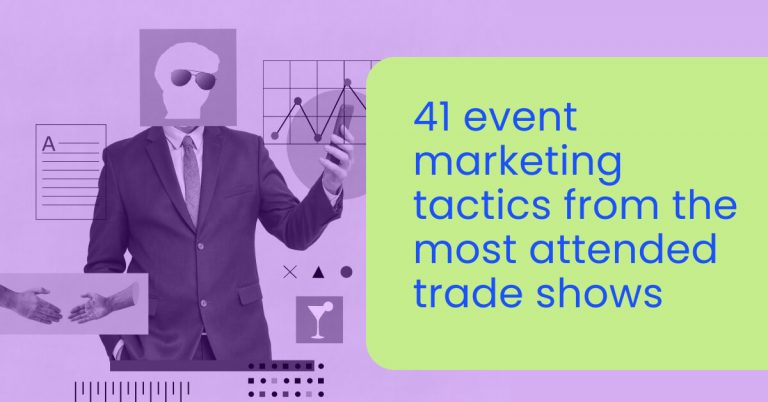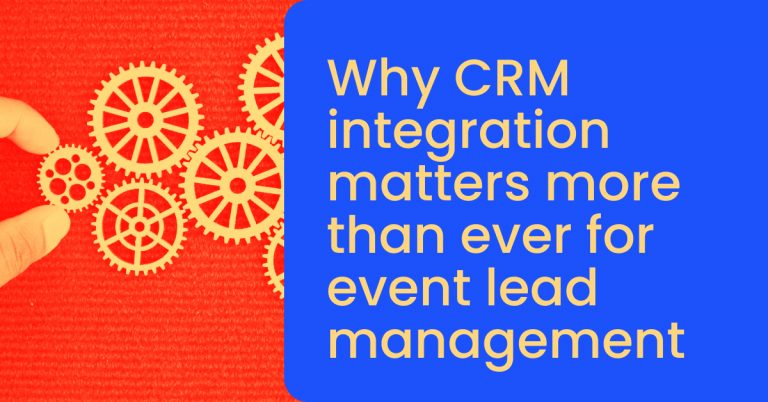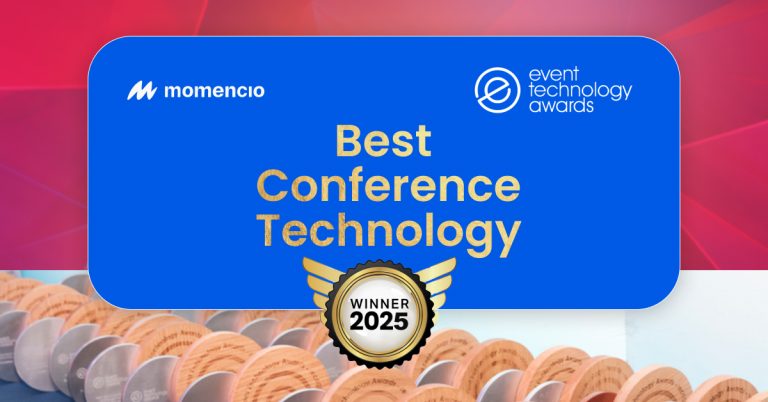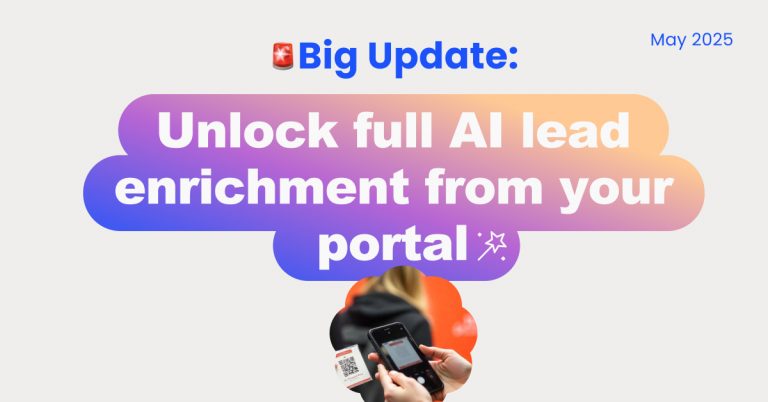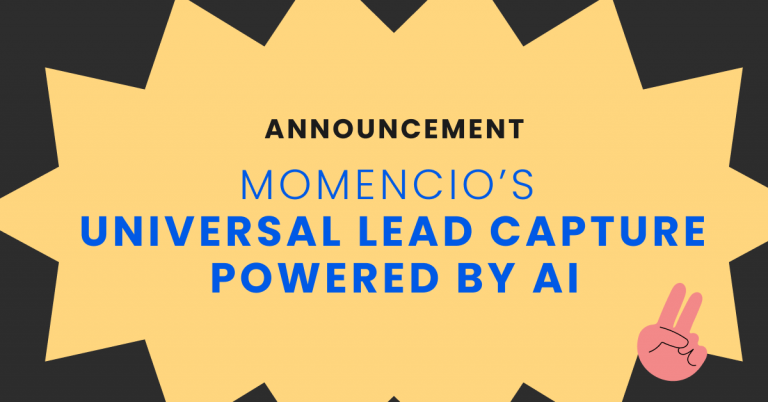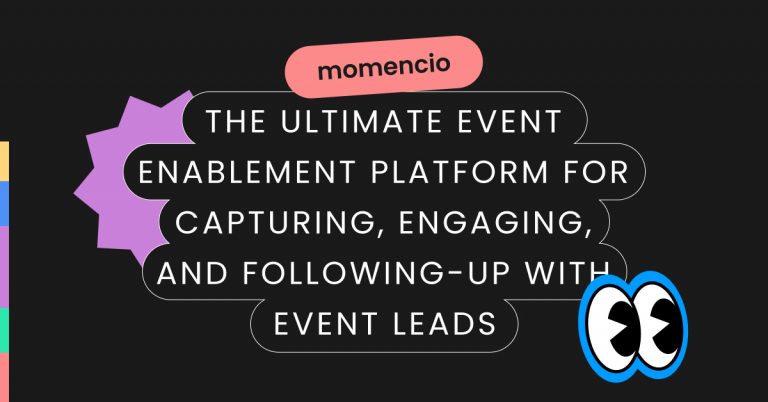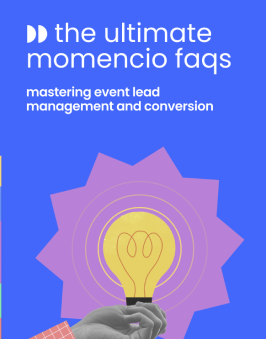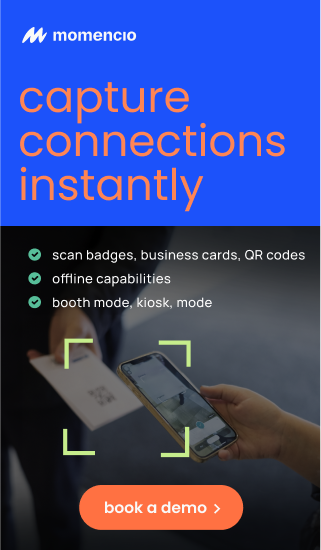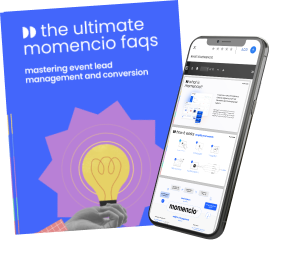Let’s face it: you practically broke your back to get this corporate event off the ground, and you want to make it all worth it. Collecting the right event data is the first step. But it’s not just about data collection; it’s also about analyzing that event data and integrating what you’ve gleaned into your company’s plan of action.
Fortunately, what used to be a ridiculously time-consuming process is made easy with the proper data mining resources and a killer set of steps to ensure that data is utilized to its fullest extent. Powerful technology is now available to help companies extract the crucial details they need to thrive in a competitive market. You can finally understand your data and apply it to the sales process in a streamlined, efficient way.
TL;DR: Event data is crucial for understanding attendee behavior and optimizing event performance. Learn how to collect and analyze data to improve engagement, fine-tune marketing strategies, and drive higher ROI through data-driven decision-making.
How to predict customer trends and make data-driven decisions
1. Ask the right questions from your event data
Once the event’s in the bag (good job, by the way), develop a set of questions for the event data you’ve collected. Things like:
– Does this person fit our target audience/Is this person the right kind of buyer?
– What should follow-up look like with this person?
– When is this person most likely to buy?
– What needs to happen to convert this lead?
– Did this event seal the deal for this lead or get them one step closer?
2. Make sure you use the best tools
Whether your event booth used kiosks, tablets, wireless data entry, event management, CRM software, or an actual cyborg (okay, maybe not that), look over your data to ensure that your tools have collected what you really need. Leads can include handy tags, segmentation by zip code, notes on how data was collected for sales conversations, and more. Your technological resources should help you convert leads faster and more efficiently than you thought possible.
Good data mining can:
– Forecast sales
– Calculate risk
– Generate recommendations
– Reveal customer buying patterns
– Develop sophisticated customer groupings
3. Create a timeline to meet your goals realistically
Identify your targeted buyers, the event dollars it will take to reach them, and how to dispense the right amount of funds to make that happen. A detailed timeline can help you do just that. Bonus points for including the products and services that will require extra promotion as well as any opportunities or barriers that may pop up along the way.
4. Know the value of your spending inside and out
Sophisticated reports will help you accomplish this. Extract management reports, performance graphs, and expense reviews from big data to truly make the most of your event. By managing your data well, you can see what your event dollars can do in terms of revenue. Then, incorporate those findings into the next round and watch the leads come rolling in.
Wring out those event logs ‘til they’re nice and dry. Discover what your target audience really needs and get the results you’ve been looking for with the best data mining resources in combination with the steps above.
If you really want to take things to the next level, access your prospective customers’ viewing habits in real time with the momencio platform. Know when they’re sneaking a peek at what you offer, and give yourself the chance to follow up at the right time with a customized solution. Measure engagement every step of the way through the buying journey. Have your tradeshow booth activity logged before you’ve even left the building.
Get started today by requesting a demo and see for yourself.
What is event data and how to use it
Event data encompasses all information collected before, during, and after an event, providing insights into attendee behaviors, preferences, and engagement levels. This data includes details like registration info, attendance patterns, feedback, session engagement, and interactions at booths. When harnessed effectively, event data becomes a powerful tool for tailoring experiences, optimizing lead capture, and enhancing the effectiveness of post-event follow-ups.
One of the most effective ways to use event data is to segment attendees based on demographics, interests, and behavior. This segmentation enables personalized marketing campaigns, allowing marketers to create targeted content and offers for each audience segment. For example, by analyzing session attendance and engagement, marketers can identify the topics that resonate most with attendees and personalize follow-ups to address those interests.
Using event data to measure engagement levels is another way to maximize its impact. High-engagement activities can provide insights into what content or experiences are valuable to attendees. For instance, if certain sessions attract more traffic or have longer dwell times, planners can analyze this data to replicate successful elements in future events. Additionally, monitoring engagement with different touchpoints—such as interactive kiosks, social media activity, or virtual elements—helps assess which channels contribute most to audience engagement and enhance attendee experience.
To optimize lead capture, event tech tools for engagement like badge scanners, mobile apps, and event management software can be used to record and store each interaction. Tracking touchpoints helps identify warm leads based on activity levels, allowing for better lead scoring and prioritization. Integrating this data with a CRM system further enhances sales enablement by automating follow-ups tailored to the lead’s interests.
Why is event data crucial for sales success
Event data plays an instrumental role in driving sales success, as it allows sales and marketing teams to make data-driven decisions that improve lead quality, conversion rates, and ROI. Understanding attendee engagement patterns enables sales teams to tailor their approach, focusing on prospects who show the highest potential for conversion. This strategy not only increases the effectiveness of sales enablement and efficiency but also boosts the productivity of sales teams by concentrating resources on high-priority leads.
Using event data, marketers can track high-conversion lead strategies, ensuring that their efforts are aligned with the most promising leads. For example, analyzing booth interactions and content engagement during the event can reveal which attendees expressed interest in specific products or services, allowing sales teams to follow up with relevant solutions. This insight ensures that each lead receives personalized outreach, enhancing the chance of conversion.
Event data is also invaluable for customer journey mapping in events. By tracking each interaction from the first touchpoint to the final follow-up, marketers can map the customer’s journey and identify key moments that influenced the attendee’s perception of the brand. This journey mapping is essential for creating a seamless experience that nurtures leads through every stage of the sales funnel.
Moreover, event data supports marketing automation and engagement, streamlining post-event follow-ups and helping sales teams maintain consistent communication with leads. For instance, after an event, marketing teams can use automation tools to send personalized content to attendees, such as session recaps, case studies, or product demos. This keeps leads engaged and ensures that the brand stays top-of-mind, boosting the likelihood of conversion.
By analyzing event performance data, organizations can measure the ROI of trade show success tactics and refine their approach for future events. Knowing which engagement strategies resulted in high-quality leads allows marketers to continuously improve their event strategy, setting the stage for sustained sales growth and customer loyalty.
How to analyze event data
Analyzing event data is essential for understanding the effectiveness of an event and identifying areas for improvement. Here’s a breakdown of the steps to analyze event data effectively:
1. Set clear KPIs and goals
Before diving into data analysis, it’s crucial to define the goals and event performance measurement metrics you want to evaluate. Common KPIs include engagement levels, lead conversion rates, attendee satisfaction scores, and overall ROI. Establishing these metrics allows you to focus on the most relevant data points and assess event success accurately.
2. Collect data from multiple sources
Comprehensive data collection is essential for a thorough analysis. Event planners should gather data from all available sources, including real-time event analytics, registration data, session attendance, feedback surveys, and social media interactions. Each data source provides unique insights, from understanding attendee demographics to tracking real-time engagement during the event.
3. Segment and prioritize data
Once data is collected, it’s important to segment it by attendee demographics, engagement levels, and session preferences. This segmentation helps reveal patterns in attendee behavior, allowing marketers to identify high-value segments. Prioritizing data by relevance also ensures that analysis focuses on key insights that contribute to high-conversion lead strategies.
4. Use analytics tools for deeper insights
Advanced analytics tools enable event marketers to gain a deeper understanding of data. Analytics tools for measuring event success, such as dashboards and CRM-integrated analytics, provide insights into engagement trends, lead quality, and conversion potential. These tools allow for real-time data visualization and trend analysis, making it easier to spot patterns and make informed adjustments to event strategies.
5. Monitor engagement patterns
Tracking engagement patterns is crucial for understanding what works and what doesn’t. By analyzing metrics like session attendance, dwell time, and click-through rates on digital elements, planners can identify high-performing content and adjust future events accordingly. Real-time data also helps in making adjustments on the spot, optimizing in-booth engagement strategies and ensuring attendees are continuously engaged.
6. Generate actionable insights
The final step is to translate data into actionable insights. For instance, if data shows that attendees respond positively to interactive demos, planners can incorporate more of these elements in future events. By regularly reviewing data insights, event organizers can refine their event strategy and optimization, maximizing ROI and improving the attendee experience.
How can event data be used to enhance customer experience
Leveraging event data to improve customer experience involves personalizing interactions, optimizing touchpoints, and creating a seamless journey from start to finish. Here’s how event data helps craft an outstanding experience for attendees:
1. Personalization at every stage
One of the most effective uses of event data is to provide a personalized experience for each attendee. By analyzing registration data, interest areas, and previous engagement history, event marketers can offer customized schedules, content, and networking opportunities. For example, digital experience platforms for events use this data to recommend sessions or exhibitors aligned with each attendee’s preferences. This personalized approach not only enhances the attendee experience but also increases the likelihood of lead conversion.
2. Improving engagement with targeted content
Event data provides insights into the type of content that resonates most with attendees, allowing marketers to focus on high-engagement activities. By analyzing event performance data, planners can identify which sessions, demos, or workshops draw the most interest and tailor their offerings to meet these preferences. For instance, if engagement metrics reveal that attendees are highly interested in hands-on workshops, planners can offer more interactive experiences that drive deeper engagement and lead capture strategies.
3. Optimizing follow-ups based on attendee behavior
Post-event data is invaluable for crafting follow-up strategies that keep attendees engaged. By analyzing which sessions or activities an attendee participated in, marketers can send personalized follow-up emails with relevant content. Marketing automation for event follow-ups helps streamline this process, delivering targeted content such as session recordings, product information, or invitations to future events. This data-driven approach increases the relevance of follow-ups, leading to stronger engagement and higher conversion rates.
4. Enhancing networking opportunities
Networking is a key part of any event experience, and event data can optimize networking opportunities to connect attendees more effectively. By analyzing attendee profiles and interests, planners can create networking and relationship-building sessions that bring like-minded professionals together. Event apps can facilitate this process, suggesting potential connections and providing personalized matchmaking based on shared interests. Enhanced networking experiences contribute to a more memorable event and build long-term relationships between attendees and the brand.
5. Real-time adjustments to improve satisfaction
Real-time data allows event planners to monitor attendee satisfaction and adjust elements of the event as needed. For example, if data reveals that a particular session is overcrowded, planners can arrange for additional seating or stream the session in other areas. Similarly, if engagement with certain booths is lower than expected, adjustments can be made to draw more attendees. Real-time monitoring not only enhances the immediate attendee experience but also enables data-driven sales techniques that drive post-event conversions.
6. Using attendee feedback for continuous improvement
Attendee feedback collected through surveys or digital forms provides actionable insights that can shape future events. Analyzing feedback data allows planners to identify pain points, highlight successful elements, and make improvements that align with attendee expectations. This continuous feedback loop ensures that each event builds on past successes, ultimately leading to better attendee satisfaction and stronger ROI.
Conclusion
Event data has redefined how marketers and event professionals approach event planning, execution, and follow-up. By capturing and analyzing detailed insights on attendee engagement, preferences, and interactions, event organizers can deliver highly personalized experiences that enhance customer satisfaction and drive conversions. From pre-event strategies to post-event follow-ups, data empowers marketers to make informed decisions that boost event ROI, optimize lead generation, and nurture long-term relationships with attendees.
Leveraging event data doesn’t just improve individual events—it builds a foundation for continuous improvement, enabling organizations to refine their approach with each event and respond dynamically to audience needs. By focusing on real-time insights, effective segmentation, and targeted follow-ups, event professionals can create impactful, data-driven strategies that align with business goals and foster enduring customer relationships.
FAQs
- What is event data, and why is it important?
- Event data includes all information collected from attendee interactions before, during, and after an event, such as engagement levels, preferences, and behaviors. It’s important because it allows marketers and planners to create personalized experiences, optimize engagement, and improve overall event ROI. By using event data effectively, organizers can refine their approach to lead generation, audience engagement, and customer satisfaction.
- How does event data contribute to sales success?
- Event data provides insights into attendee interests and engagement, allowing sales teams to prioritize leads with the highest conversion potential. Through real-time analysis, data-driven lead scoring and prioritization, and targeted post-event follow-ups, event data enhances sales effectiveness by focusing resources on high-value leads. It also supports sales enablement and efficiency by ensuring outreach efforts are relevant and personalized.
- What are some practical ways to use event data to enhance attendee experience?
- Event data allows for a more personalized attendee experience. By analyzing interests and engagement history, organizers can recommend tailored content, sessions, and networking opportunities, making attendees feel valued and improving satisfaction. Real-time data also allows for on-the-spot adjustments, such as reallocating resources to popular sessions or facilitating impromptu networking events, further enhancing the overall experience.
- How can I analyze event data effectively?
- To analyze event data effectively, set clear KPIs, segment your data by attendee demographics and behavior, and use analytics tools for measuring event success to uncover trends. Track engagement patterns across different channels to identify what works best, and use these insights to improve future events. Comprehensive data analysis not only highlights areas of success but also reveals opportunities for enhancement.
- What tools are best for collecting and analyzing event data?
- Popular tools for event data collection and analysis include CRM systems, event management software, mobile event apps, and real-time analytics platforms. These tools capture data on attendee behavior, engagement, and feedback, which can be analyzed to inform event strategies, measure ROI, and drive high-conversion lead strategies. Using integrated data solutions helps streamline the entire data lifecycle, from collection to actionable insights.
